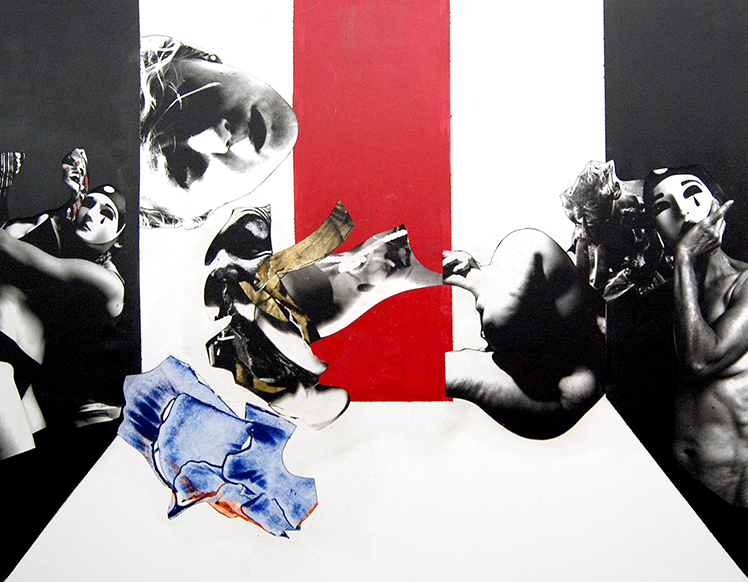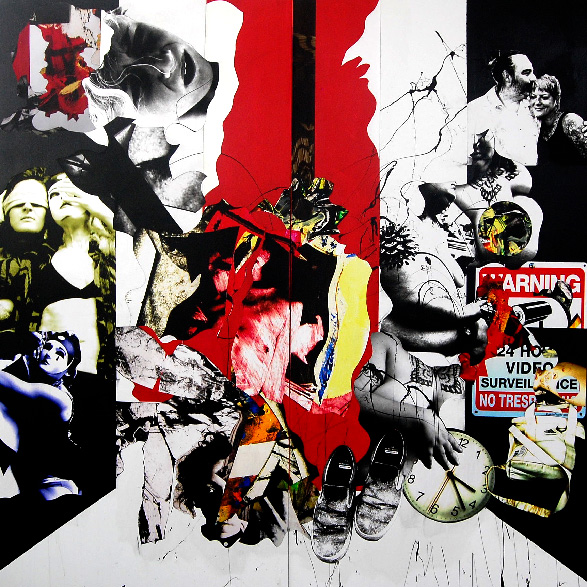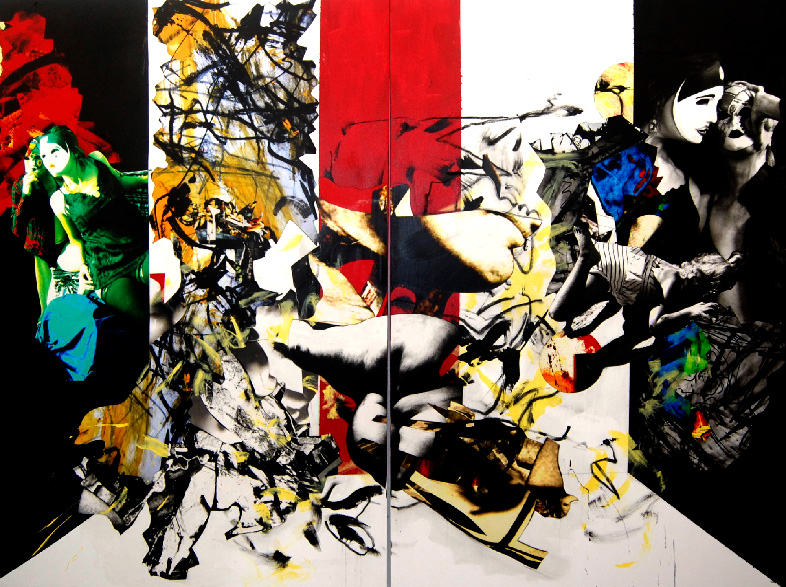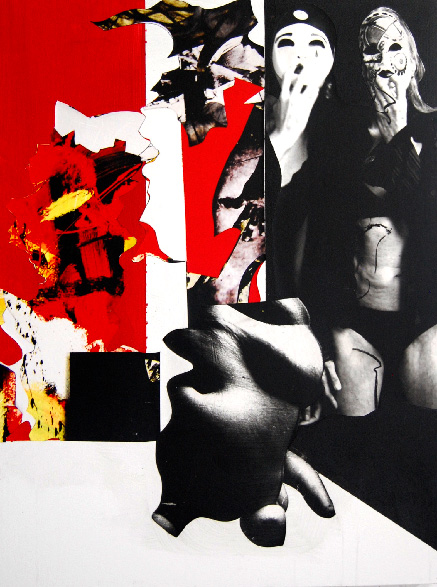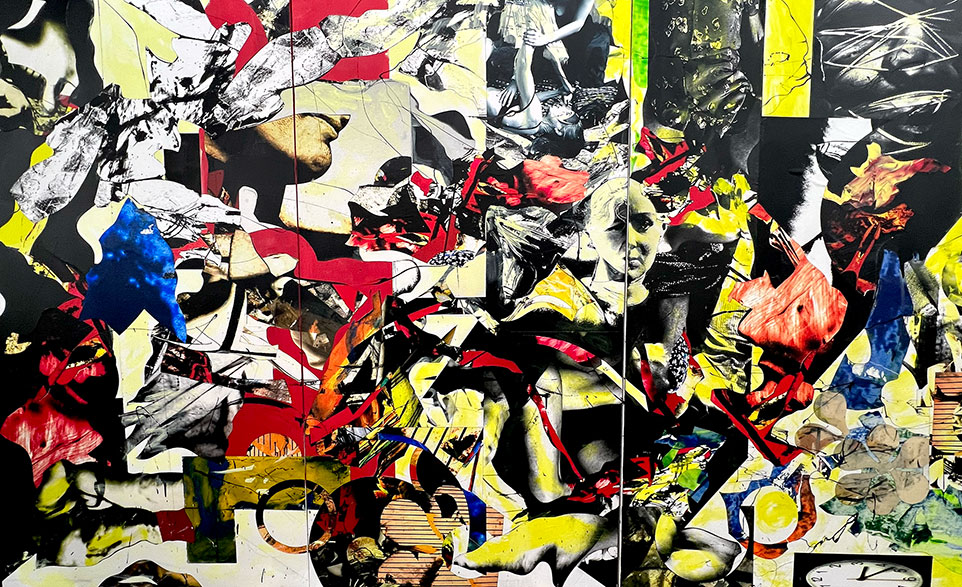Theatre of the Absurd
Theatre of the Absurd: Paintings by Budge Hyde
There is an element of spectatorship in the work, I think because many of the background images are figurative, as if they, as well as we, are observing events unfold. It is something we are a part of, maybe even implicated in, but can only impotently behold. We are not impassive or even perhaps passive, just helpless. Like watching a play that we are emotionally invested in, that we maybe struggle with and are therefore not merely passive observers. My mind also goes to Bacon, particularly his triptychs, not so much because of the content but because of the space.
The use of spatial perspective in the new works is an interesting departure and does create the sense of a staged event. Is the “gallery” itself a theatre of the absurd? There are clearly two different modes of organization at play: the “backdrop” of highly regimented images framing and creating the space and the more chaotic “event” taking place within that space, which reads as something being “acted out” as we watch. There is also a sense, in subsequent images, that we are looking at the same space but viewed from different angles.
Another reading might be that this interior space is the mind of the artist and is therefore a kind of “memory palace.” Of course, these readings are little deviations from the theatre of Pinter, Beckett, Ionesco, et al, in which the space would be the world at large and the “event” our struggle to make sense of it all, to find structure, to express oneself, to find peace within that space; a personal struggle, but also a very human one.
It occurs to me that throughout all your work there is this constant play between figuration and abstraction. These elements both complement each other and bring each other into question. It is that juxtaposition that epitomizes the struggle to make sense of the world we live in.
Paul Lindale, Artist






